Transition Overwatch and Code Platoon – Preparing Servicemembers for Software Engineering Apprenticeships
Code Platoon and Transition Overwatch work together to help active duty Servicemembers transition to technology careers via paid tech apprenticeships. The two nonprofit organizations are connecting Transition Overwatch’s program participants in need of technical training with Code Platoon’s military Coding Bootcamps.
Gabriel Seda-Wilmarth and Samuel Son attend Code Platoon’s Full-stack Software Engineering Bootcamp to prepare for Junior Software Developer apprenticeships.
“I found Transition Overwatch through the Department of Defense’s SkillBridge page,” Samuel said. “They recommended Code Platoon. I saw Code Platoon’s great reviews, so I applied for the in-person full-stack program.”
“I was already interested in Code Platoon when I found Transition Overwatch,” Gabriel said. “Other coding bootcamps I looked at didn’t seem to care whether I succeeded. Code Platoon’s scholarships, vetting process, career services, and nonprofit status convinced me they would give me the best technical training. I knew they’d care about my success.”
Samuel and Gabriel are in their fifth week of the 15-week Immersive Sierra Platoon. Besides their software development training, Code Platoon and Transition Overwatch are preparing them for behavioral and technical interviews with apprenticeship partners.
“Transition Overwatch and Code Platoon have been helping me a lot with the finer details of a professional tech interview,” Samuel said. “Code Platoon’s instructors have students practice whiteboarding coding challenges for technical interviews while Transition Overwatch coaches me through behavioral interviewing.”
“Transition Overwatch recently got me an interview with Liberty Mutual. It was sooner than expected, but I had plenty of preparation already. I think it went well.”
“I would one hundred percent recommend both Code Platoon and Transition Overwatch.”
“I’m getting a head start on my software engineering career with Code Platoon and Transition Overwatch,” Gabriel said. “Code Platoon’s technical training is invaluable. I love building upon what I learn daily. I have a professional development mentor, and the Sierra Platoon meets weekly for Beyond Tech soft-skills workshops.”
“Transition Overwatch has also helped me flesh out my LinkedIn page, matches me with their apprenticeship partners, and paired me with an interviewing mentor. We meet before each of my interviews to create an ‘attack plan’ and rehearse.
“I did well on my first interview for a post-Code Platoon apprenticeship. I credit them for that success.”
Once Sierra Platoon graduates from Code Platoon, Samuel and Gabriel will begin their software developer apprenticeships through Transition Overwatch. Their peers will also begin apprenticeships or full-time employment with Code Platoon’s Apprenticeship and Preferred Hiring Partners.
“Transition Overwatch stays active and engaged with its military members for over two years,” Sean Ofeldt, Transition Overwatch’s Founder and Chief Executive Officer, said. “Throughout this time, the military member receives advanced technical training, professional development, success coaching, and camaraderie with a community of peers. Once our candidates are placed in their apprenticeships, we stay engaged with their employer for 12 months to ensure the military members successfully launch into their new career.”
Transition Overwatch’s Unconventional Apprenticeship is an accelerated career program for transitioning Servicemembers. The organization begins aligning military members to a civilian career path while still on active duty and then connects them with relevant training partners via SkillBridge.
Servicemembers can register for the Unconventional Apprenticeship program on Transition Overwatch’s website.
Those transitioning to Software Engineering or DevOps Engineering careers can explore Code Platoon’s SkillBridge-approved training programs for Active Duty Servicemembers. Funding via VET TEC or a SkillBridge scholarship is available to qualifying SkillBridge participants.
Kayla Elkin is the Marketing Content Specialist at Code Platoon. In this role, she utilizes her marketing, writing, and editing skills developed from previous positions in higher education and educational technology. Kayla has degrees in English and Sociology from Clemson University and completed the Study in India Program (SIP) at the University of Hyderabad. She lives with her partner in northern Chicago.
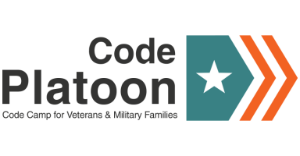
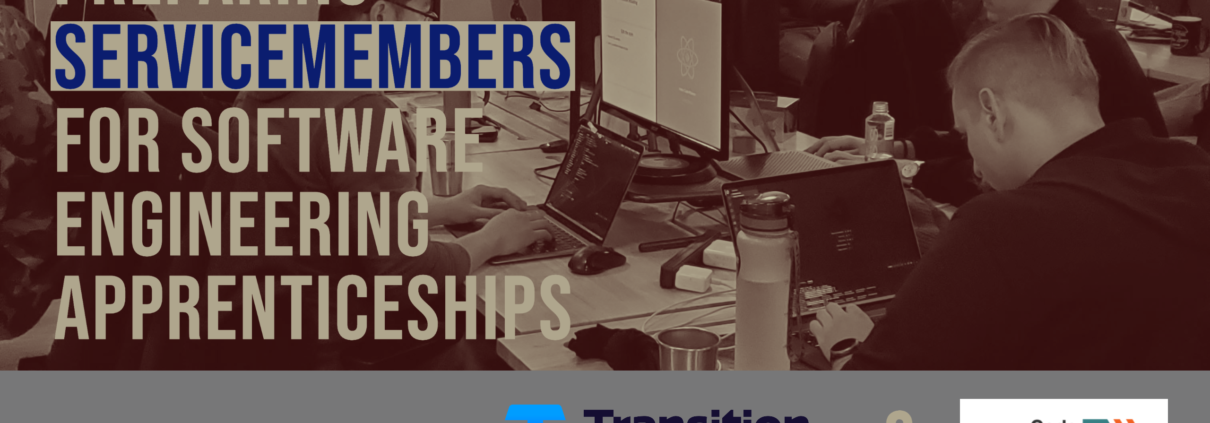


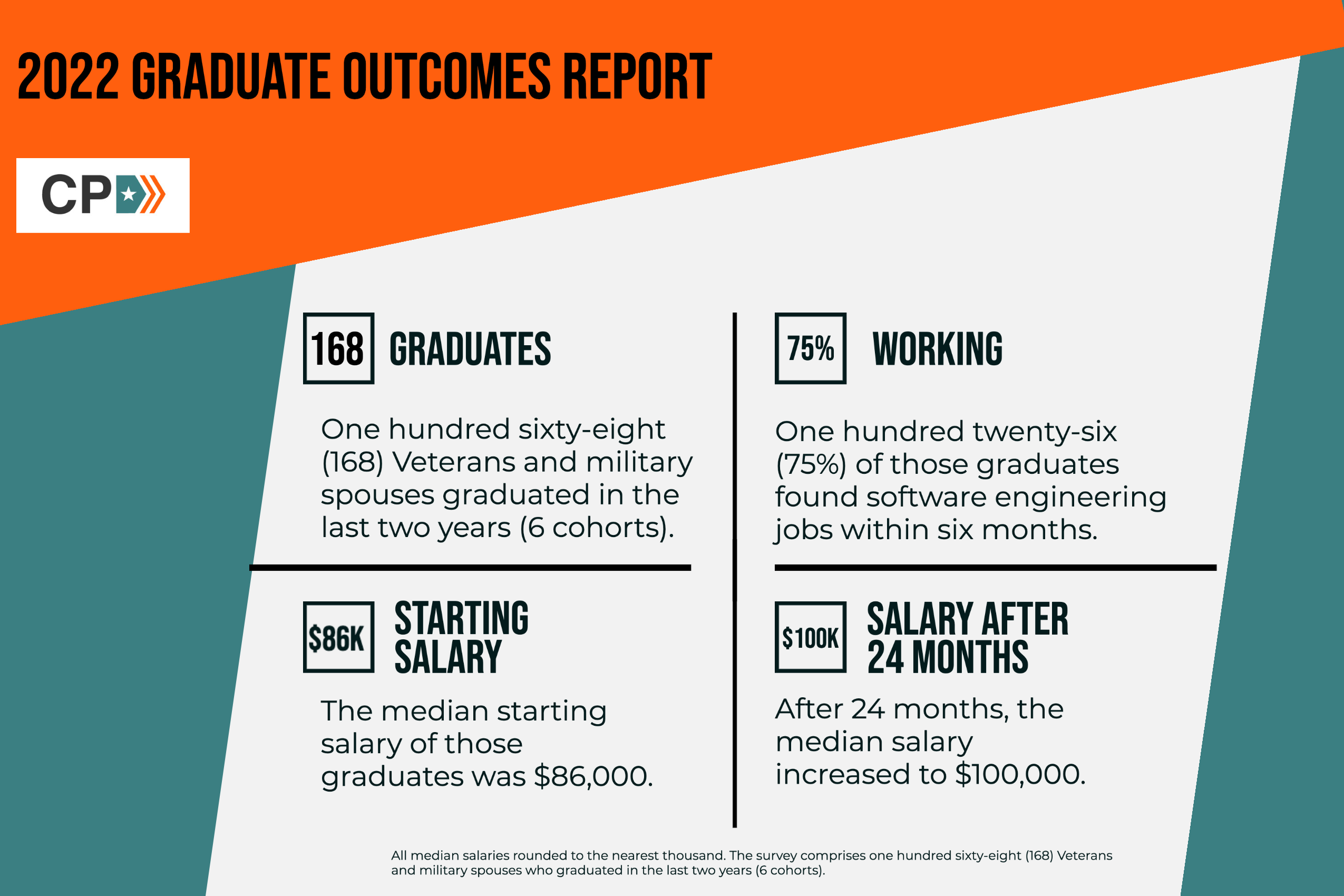


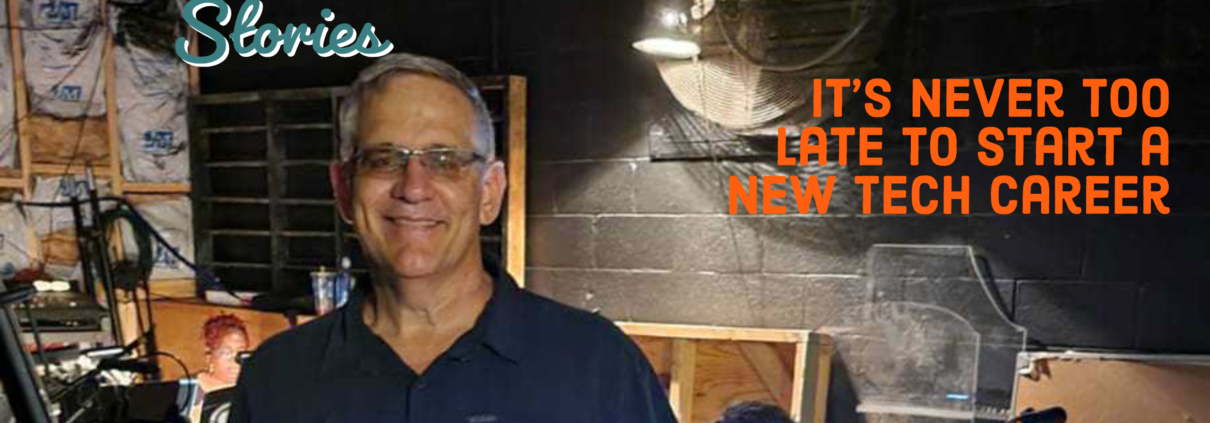
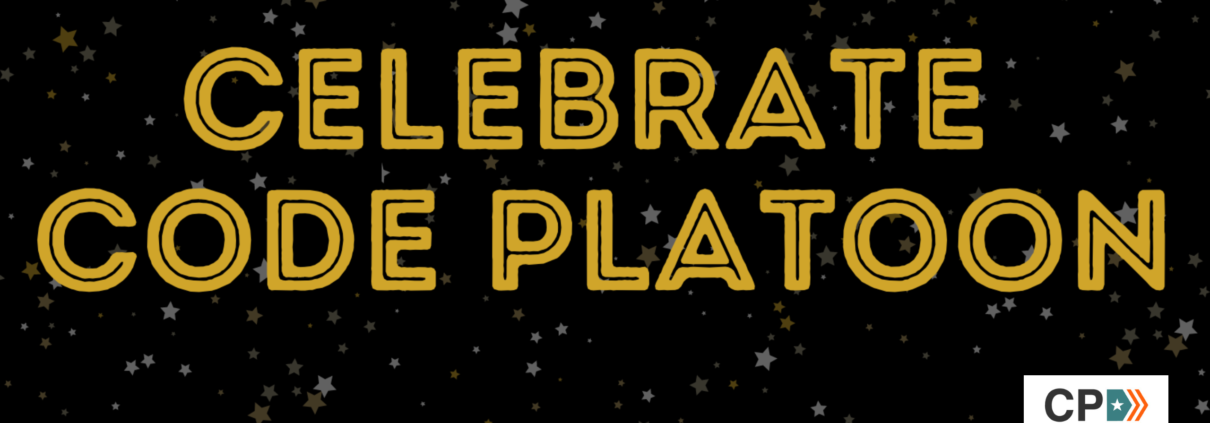
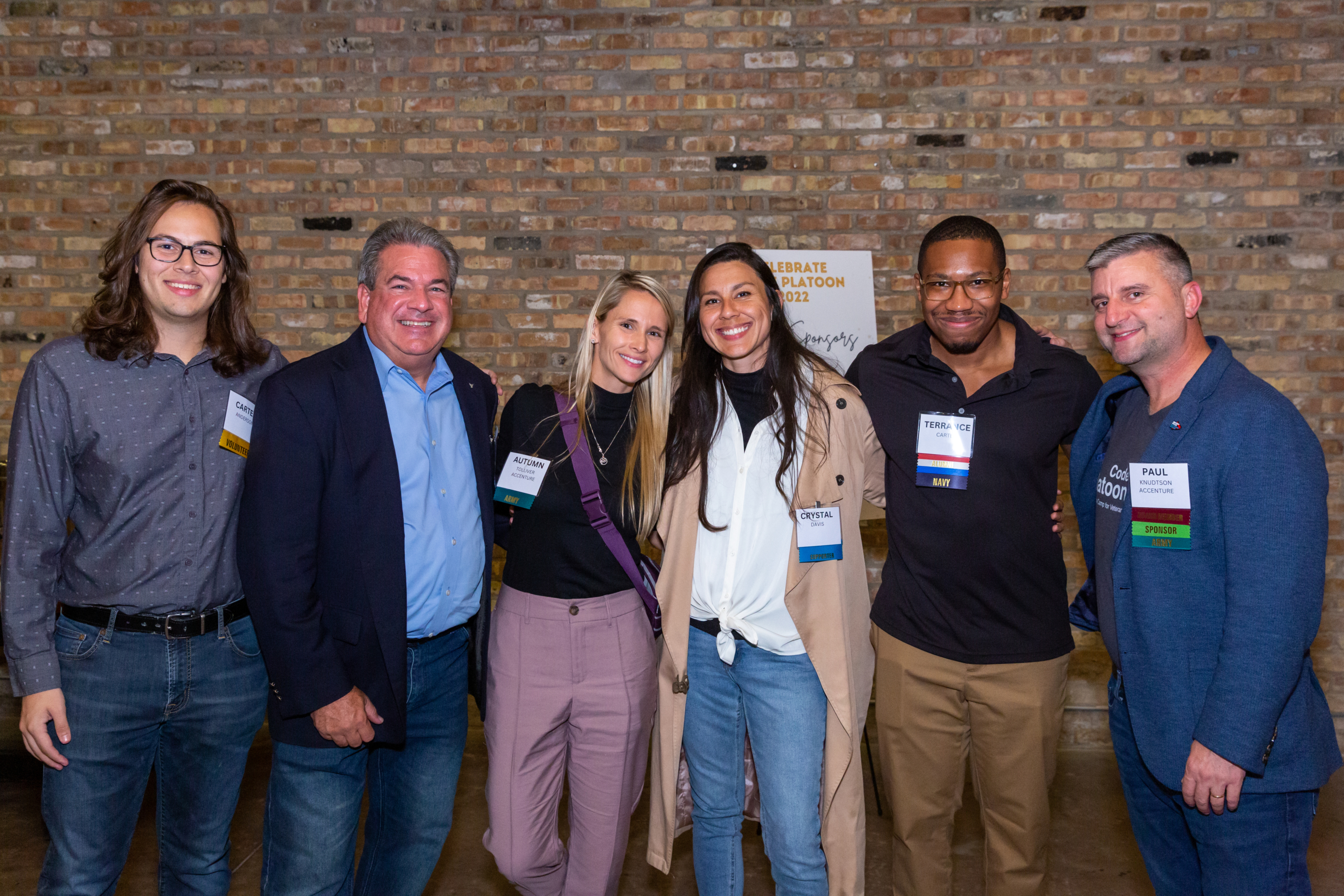 The Program
The Program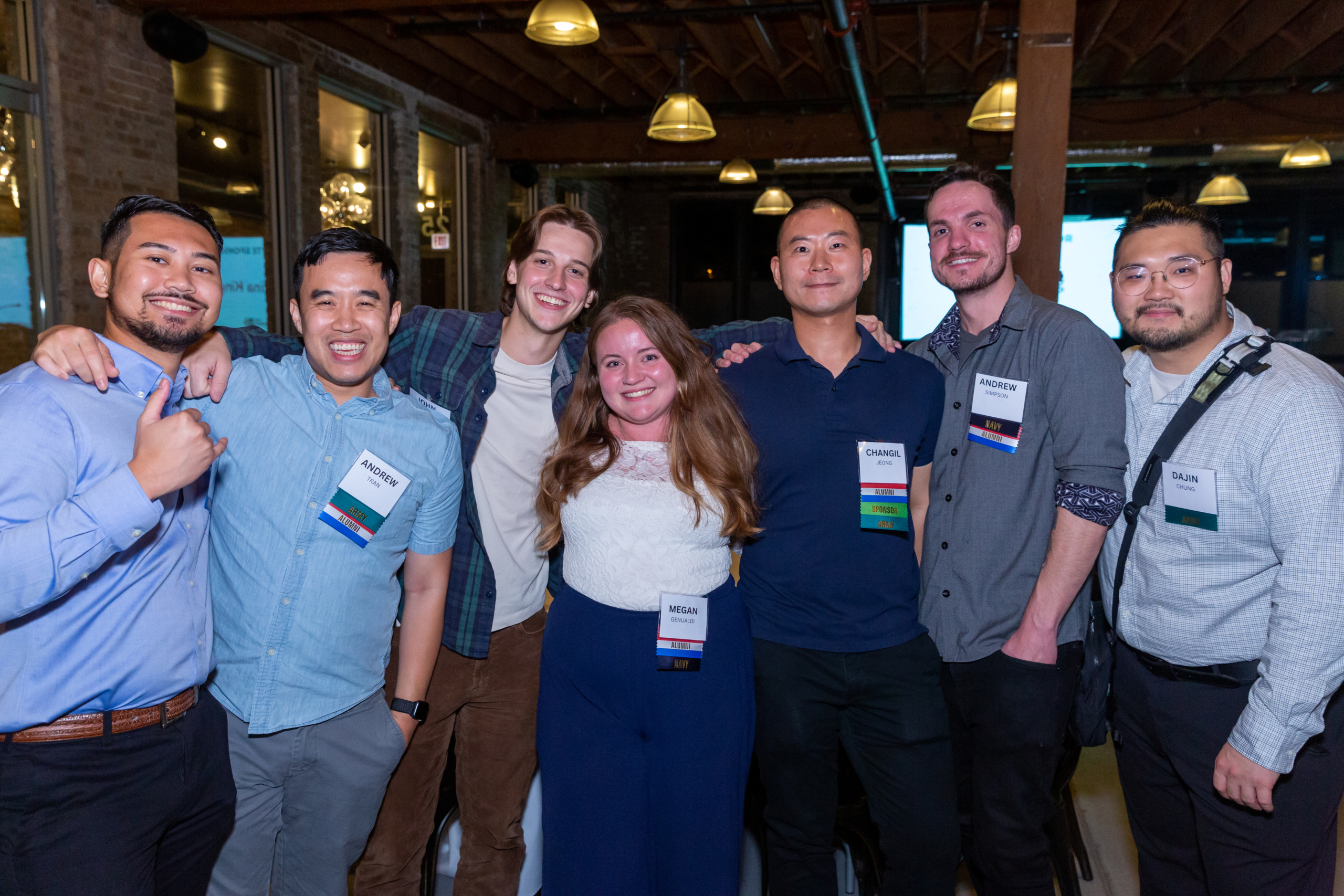 Accenture, Partner of the Year, 2022
Accenture, Partner of the Year, 2022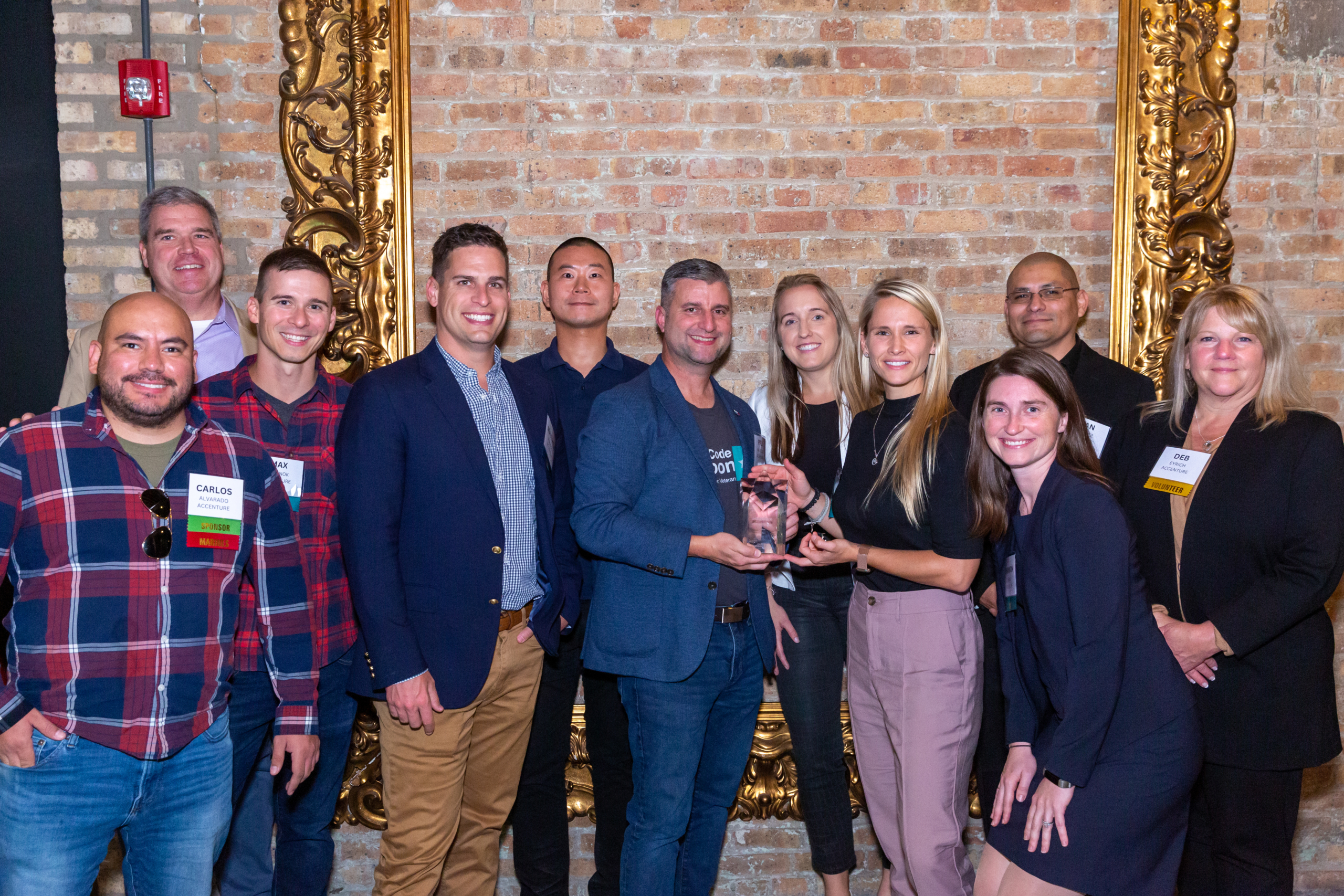 Accenture answers the call to help the military community by providing grants, expert resume coaches, and talent pipelines for Code Platoon graduates.
Accenture answers the call to help the military community by providing grants, expert resume coaches, and talent pipelines for Code Platoon graduates. 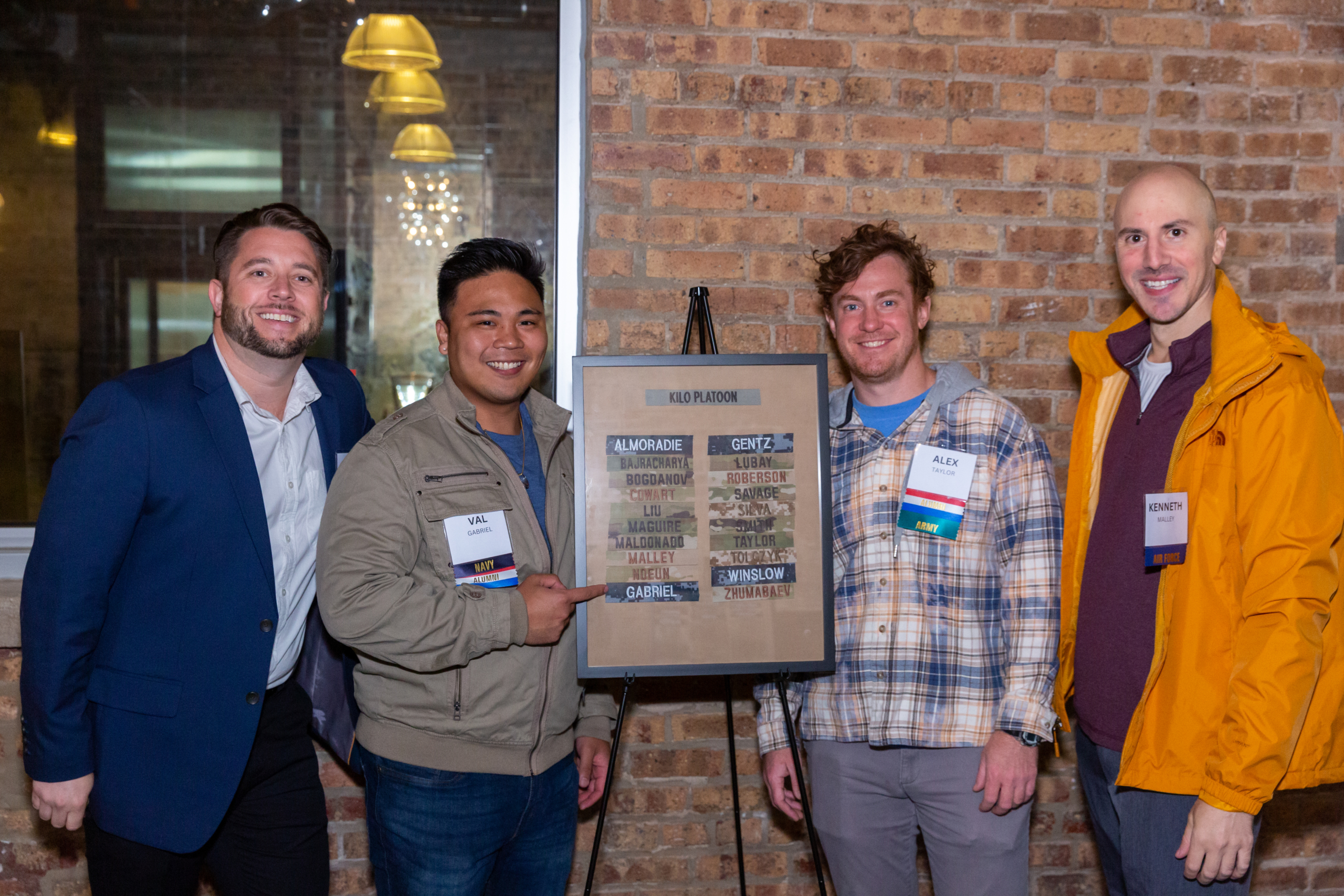 For those who couldn’t join us at Celebrate Code Platoon 2022, it’s not too late to show your support by
For those who couldn’t join us at Celebrate Code Platoon 2022, it’s not too late to show your support by 




